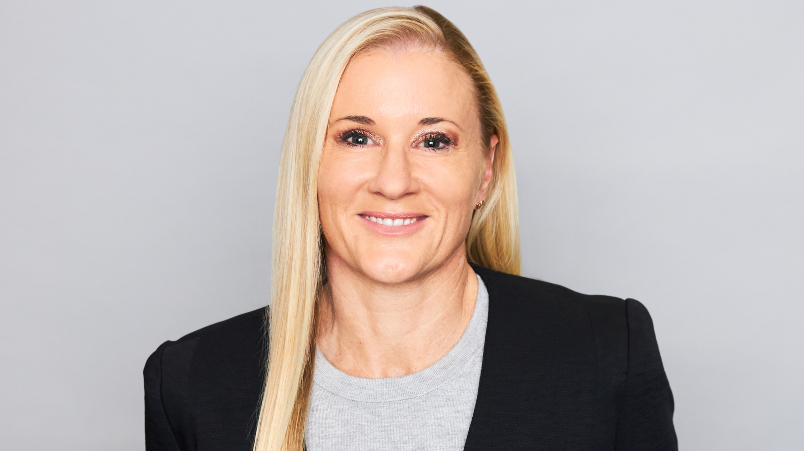Empire strikes back: Nielsen announces new digital ad measurement system, data deal with Flybuys; Hints at audience measurement fight after IAB deal loss

"You're an advertising agency and you tag your campaign, and now you can measure it across Google, Facebook – any of your open web placements," Nielsen Pacific MD Monique Perry.
After a fraught time recovering and rebuilding from the loss of a crucial global data verification alliance with Facebook, Nielsen is launching a new online advertising measurement service here that is no longer reliant on one provider – and will ultimately match and measure ad exposure to sales impact. Nielsen Identity System, which starts in early April and will underpin Nielsen's plans to create a rival audience measurement service to the IAB-sanctioned Ipsos contract, takes local data from Unpacked by Flybuys, The Trade Desk, Equifax and others. It captures de-duplicated demographic audience exposure for online ad campaigns across Google, Facebook and the open web. Agencies and advertisers have been patient, Pacific MD Monique Perry says, and their patience has paid off.
What you need to know:
- Nielsen has launched its new Digital Ad Ratings product, as part of the Nielsen Identity System that goes live in early April in Australia.
- The system uses data from Unpacked by Flybuys – the first data partner deal made outside of the US – as well as partnerships with The Trade Desk, Kochava, Equifax, BDEX, Full Contact and more.
- Pacific MD Monique Perry says Nielsen is back, with a vengeance. She didn’t rule out entering the market with an audience measurement product to rival the industry endorsed Ipsos standard, awarded in a tender mid last year by the IAB.
- The Nielsen ad measurement product includes 57 million unique device identifiers and millions of unique identifiers like hashed email addresses.
- Nielsen has signalled its intent to add more data partner alliances that will allow advertisers to measure ad exposure directly to purchasing behaviour.
Measurement wars
Global measurement giant Nielsen has unveiled its new people-based digital advertising measurement product, which will cover Google, Facebook and the open web to track the demographics of people who see ads.
Launching in Australia in early April, the company’s Nielsen Identity System includes data from Unpacked by Flybuys – the first global deal signed outside of the US, as well as partnerships with The Trade Desk, Equifax, and Kochava, among others.
This iteration of Nielsen’s Digital Ad Ratings is the first big measurement push from the company since Facebook pulled its global verification deal in 2020.
“This is really that period of restoring everything we had from the initial measurement, but in a new landscape in a privacy-secure way," Pacific MD Monique Perry told Mi3. "We’ve got the Google integration, the Facebook integration, and identity gives us that open web scale of measurement.
Earlier this year, Nielsen launched the service in Italy, France and the UK. In April, it launches here and in Japan, Germany and India. Other countries will follow.
Perry said more data partnerships were on track to land locally.
In a move certain to splinter the online advertising industry's solidarity, she also hinted the company may soon return to market with an audience measurement product, competing against the IAB’s industry endorsed Ipsos currency. Ipsos was awarded the contract last year, ending a 10-year relationship between the IAB and Nielsen.
Last week, IAB Australia CEO Gai Le Roy dismissed rumours the new hybrid system from Ipsos, known as Iris, would be delayed. She did indicate however, it may come in July, rather than the Q2 2022 rollout first announced. Ipsos’ Iris system combines panels and tags to give cross-media measurement and unduplicated reach.
Likewise, Nielsen alluded to building digital ad sales impact metrics, which would be a major development. Directly linking ads to sales across the walled gardens and the open web has been a Holy Grail dream for some and is partly what is fuelling the surge in retailer media - linking ad exposure directly to purchasing behaviour.
In a statement, Andrew Palmer, Nielsen Head of Media Analytics Australia, said: “In some instances, these new integrations enable a direct link between a verified ad exposure and consumer behaviour. This linkage can then deliver true outcome-based measurement, enabling both brand and sales lift quantification.”
How does it work?
The Nielsen Identity System is effectively a giant data lake filled by rivers of data from different providers, like The Trade Desk, Equifax and Kochava. Last month, Nielsen announced a deal with Experian, which may well extend to Australia soon. The giant pool of data includes information about 57 million unique mobile devices in Australia and, it’s estimated, between five and 10 million hashed – encrypted – email addresses or other unique identifiers. There are no names or other personally identifiable information.
“What that means is that you're an advertising agency and you tag your campaign, and now you can measure it across Google, Facebook – any of your open web placements. It's all measured and the deduplicated and you have a total campaign reach,” Perry said.
For Nielsen, having multiple data partners means flexibility, a lesson seared into the measurement giant's institutional memory after a single global verification deal with Facebook ended and dramatically disrupted its entire audience and ad measurement business.
“Having multiple data providers gives you contingency. We’ve got contingency in that system so if you add in a partnership or end a partnership, there’s contingency there,” Perry said. “These are some of the learnings we’ve had from our first adventures.”
The solution launched first in Europe and is, Perry assures, compliant with the region’s General Data Protection Regulation. One GDPR regulator recently upended an industry-built consent pop up system that for years was believed to be compliant.
“We’ve had to build something that meets the obligations that we have, both here and in the other countries on privacy,” Perry said.
